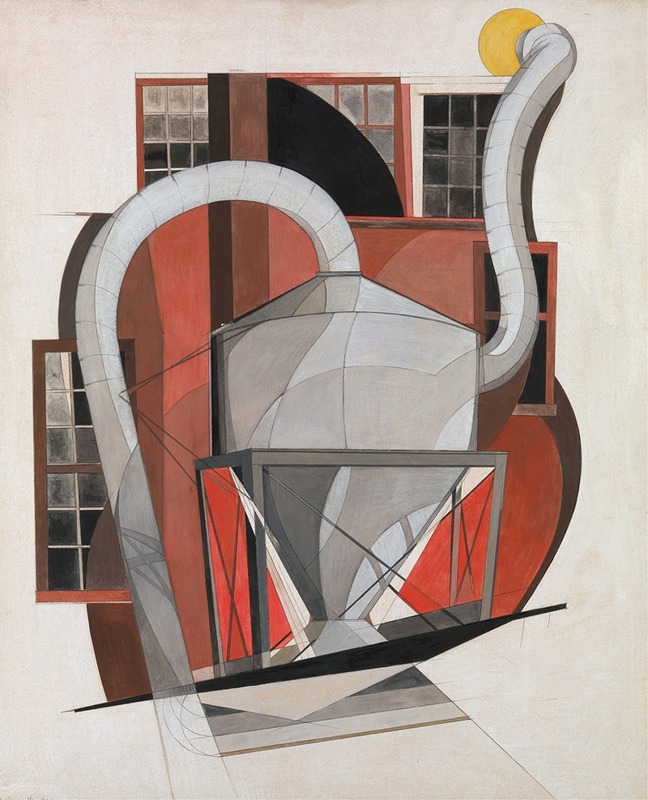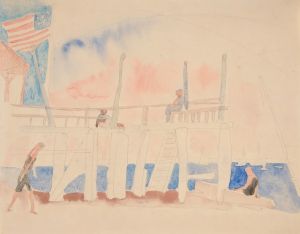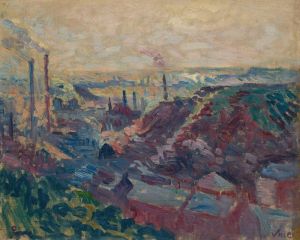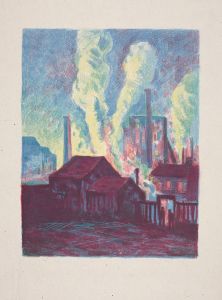
Machinery
A hand-painted replica of Charles Demuth’s masterpiece Machinery, meticulously crafted by professional artists to capture the true essence of the original. Each piece is created with museum-quality canvas and rare mineral pigments, carefully painted by experienced artists with delicate brushstrokes and rich, layered colors to perfectly recreate the texture of the original artwork. Unlike machine-printed reproductions, this hand-painted version brings the painting to life, infused with the artist’s emotions and skill in every stroke. Whether for personal collection or home decoration, it instantly elevates the artistic atmosphere of any space.
Charles Demuth's painting "Machinery" is an exemplary work that reflects the Precisionist movement, which emerged in the early 20th century. Demuth, an American artist, is renowned for his contribution to this movement, which is characterized by its focus on industrialization and modernization, often depicting architectural and mechanical subjects with a sharp, clean style.
"Machinery" was created in 1920, a period when the United States was experiencing rapid industrial growth. This painting is part of a series of works by Demuth that explore industrial themes, showcasing his fascination with the mechanical and structural elements of the modern world. The Precisionist style, which Demuth helped to pioneer, is marked by its use of precise, geometric forms and a smooth, polished finish, reflecting the influence of Cubism and Futurism.
In "Machinery," Demuth employs a meticulous technique to depict the intricate details of industrial machinery. The painting features a composition of interlocking shapes and forms, representing gears, pistons, and other mechanical components. The use of bold lines and a limited color palette emphasizes the structural aspects of the machinery, highlighting the beauty and complexity of industrial design. This approach not only captures the essence of the machines themselves but also reflects the broader cultural fascination with technology and progress during this era.
Demuth's work often blurs the line between realism and abstraction, and "Machinery" is no exception. While the painting clearly represents mechanical elements, the composition is abstracted to focus on the interplay of shapes and forms. This abstraction allows viewers to appreciate the aesthetic qualities of the machinery, beyond its functional purpose. The painting's precise execution and attention to detail demonstrate Demuth's skill as an artist and his ability to convey the essence of his subjects through a modernist lens.
The significance of "Machinery" extends beyond its visual appeal. It is a reflection of the societal changes occurring during the early 20th century, as America transitioned into a more industrialized and technologically advanced nation. The painting captures the optimism and excitement of this period, as well as the complexities and challenges associated with rapid industrialization.
Charles Demuth's contribution to the Precisionist movement and his exploration of industrial themes have left a lasting impact on American art. "Machinery" is a testament to his innovative approach and his ability to capture the spirit of his time. Through this work, Demuth invites viewers to consider the relationship between art, technology, and society, encouraging a deeper appreciation for the intricate beauty of the modern world.
Overall, "Machinery" by Charles Demuth is a significant work that exemplifies the Precisionist style and reflects the cultural and technological shifts of the early 20th century. Its precise depiction of industrial elements and its abstract composition continue to resonate with audiences, offering a glimpse into the transformative power of art during a pivotal moment in history.


















